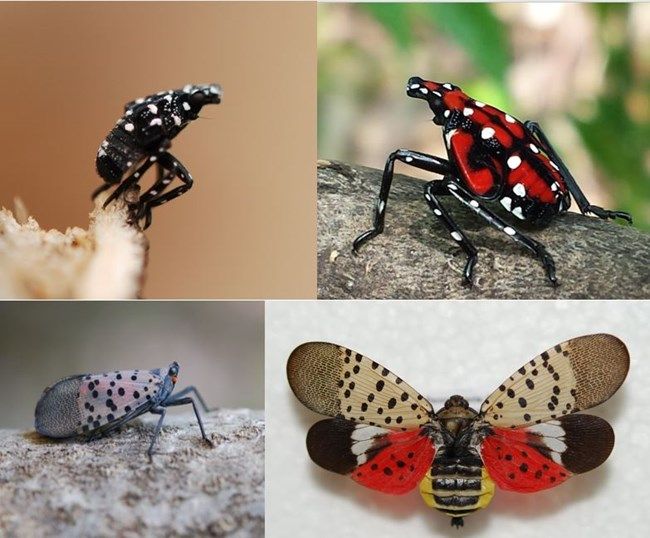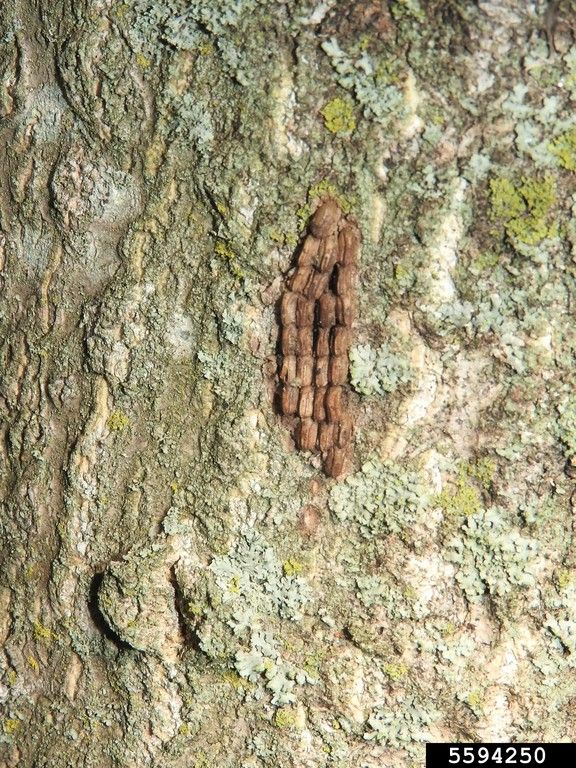See a Spotted Lanternfly? Squash It, Officials Say
The invasive insect poses a huge threat to agriculture and trees in the Northeast United States
:focal(1016x551:1017x552)/https://tf-cmsv2-smithsonianmag-media.s3.amazonaws.com/filer/63/50/635036d8-9915-473f-a837-877491cd340f/47249041041_151e863305_o.jpg)
If you see a spotted lanternfly, agricultural officials across the Northeast want you to do one thing right away: kill it. The invasive insect is dangerously destructive, especially to apple, plum and grape crops. It also excretes a sweet substance that turns whatever it covers to black mold.
“Kill it! Squash it, smash it...just get rid of it,” says a statement by the Pennsylvania Department of Agriculture. “In the fall, these bugs will lay egg masses with 30-50 eggs each.”
To alert residents, the New Jersey Department of Agriculture offers a simple directive: “Stomp It Out!” In Ohio, officials are telling people to scrape eggs off trees and immerse them in alcohol.

Featuring black dotted wings accented with bright red and a scarlet underbelly, the spotted lanternfly is an attractive insect. Appearance can be deceiving, though. This bothersome bug from Asia has become a scourge to farmers and residents across the Northeast.
With a voracious appetite, it is particularly pesty to people. Swarms of lanternflies have been reported to divebomb joggers and other outdoor enthusiasts, reports Maria Cramer and Isabella Grullón Paz for the New York Times.
“There’s nothing cute about them,” Sam Landis, an owner of Vynecrest Vineyards & Winery in Lehigh Valley, Pennsylvania, tells the Times. He says he loses an acre or two of grapevines each year to these voracious eaters. Over the past four years, he and his partners have invested hundreds of thousands of dollars in removing dead vines, planting new ones and spraying insecticides, which don’t do much.
“A day or two later, they’re back,” he tells the Times.
Though it has wings, the spotted lanternfly is actually a leafhopper. It usually jumps rather than flies between vegetation. In addition to damaging crops, the insect secretes a sugary substance that can turn into black mold, a fungus which can cause health problems, according to the Centers for Disease Control and Prevention.
The species was first detected in 2014 in Pennsylvania, where it is now considered a “huge threat” to the agriculture industry, reports Hannah Frishberg of the New York Post. It has since spread to New Jersey, Delaware, Maryland, Virginia, West Virginia, New York, Connecticut and Ohio. Recently, the pest was spotted in Central Park in New York City.
In August, a single spotted lanternfly was detected in Rhode Island. Officials responded quickly by mobilizing resources to deal with the potential problem.
“More than 800 acres of agricultural lands including vineyards, orchards and berry farms are at risk of being infested, so it’s critical that we take the necessary steps to detect and stop the spread of this invasive pest,” Cynthia Kwolek of the Rhode Island Department of Agriculture tells Richard Luscombe of the Guardian.
Officials urge people to show no mercy when the see a spotted lanternfly.
“First thing you should do is kill it,” George Hamilton, chair of entomology at Rutgers University, tells Jordan Mendoza of USA Today.
After its squashed, report it. States where the invasive insect has become a problem or where they believe it could become one have set up hotlines and websites to track the infestation.
“These are called bad bugs for a reason, don’t let them take over your county next,” the Pennsylvania Department of Agriculture states.

/https://tf-cmsv2-smithsonianmag-media.s3.amazonaws.com/accounts/headshot/dave.png)
/https://tf-cmsv2-smithsonianmag-media.s3.amazonaws.com/accounts/headshot/dave.png)